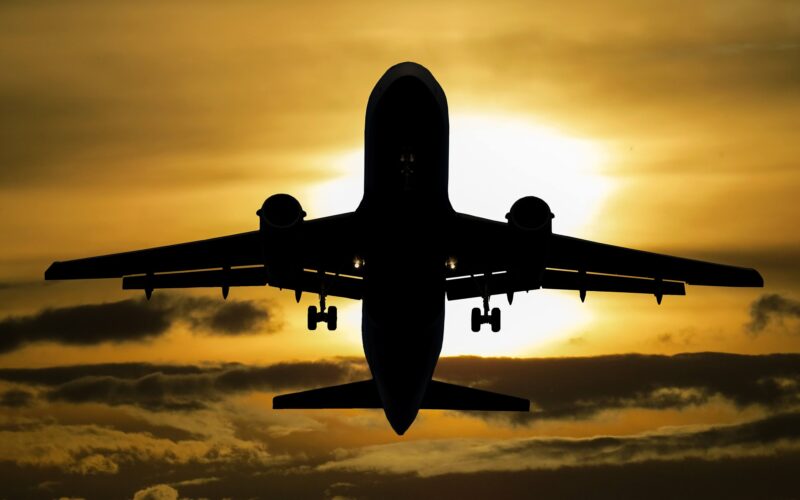Three months after the lockdown was announced all over the world, what is the current situation of civil aviation?
Several companies – gradually – restart their commercial routes, choosing among the most consolidated ones in their network.
The intervention of the States (as foreseeable) has become necessary and inevitable, materialized through unprecedented financial aid in economic terms (like the pandemic itself). As IATA reports, the International Air Transport Association, the economic support provided by the various states, has reached 125 billion dollars, divided into loans, wages subsidies, loans guarantees and liquidity injections .
How is the aid structured?
Geographically, the European region was the one that most involved the intervention of the States, considering the territorial fragmentation. However, uneven aid. The Netherlands, for example, contributed by financing 41.1% of 2019 ticket sales revenues (about $ 4 billion compared to 10 billion in 2019). Conversely, Turkey funded only 0.3% of 2019 revenues (around $ 360 million compared to $ 12 billion in 2019 revenues). The difference is obvious.
Economically, the majority of aid will leave companies with more debt than they already had. A paradoxical situation is going to be created. The liquidity problem is one of the issues that are sometimes marginalized because considered not important in the corporate case of an airline. The cash flows of many airlines (pre-crisis) were not solid, since they operated with bad negative Free Cash Flows (liquid funds freely usable after paying off debts, interests, etc.). This represents an already compromised situation which will inevitably get worse with these “aids”. Returning to the starting point of this paragraph, of the $ 123 billion in aid, approximately $ 67 billion from deferred taxation, secured loans and traditional loans (54.5%) will generate new liabilities.
Therefore, the restarting of the airline sector will be characterized by very high levels of airline debt. 2019 closed with a debt of around 430 billion dollars but the outlook for 2020 is 550 billion (+ 28%). It is clear that we are facing the worst year for the aviation sector. The companies expect to lose 84 billion dollars in 2020 with revenues that – inevitably – will be “cut” by 50%, from 838 billion dollars to about 419. In Europe alone, the RPK (Revenue passenger kilometers) index will drop by 56.4% compared to the 2019 equivalent with a net loss of 21.5 billion dollars in 2020.
Optimistically, a few weeks ago it was believed that the gradual recovery of the 2019 level (pre-crisis) would only be achieved in early 2023, but in the latest IATA report, the recovery forecasts are far from optimistic (at least for the European continent). In Europe, about 7 million jobs are at risk (just think of the announcement of the Lufthansa (LHAB) (LHA) group a few days ago, in which was announced 26,000 redundancies worldwide, despite the help of the German government for 9 billion euros).
The best cure is a fast and efficient recovery. Fast and efficient, because uncoordinated and unplanned restarting of air traffic would produce exactly the opposite of the expected effects, like any decision. The set of guidelines provided by ICAO (International Civil Aviation Organization) and ratified by EASA (European Aviation Safety Agency), such as the opening of borders and the elimination of the quarantine rule in almost all European countries will induce people to fly again with the right confidence out of their country of origin. In confirmation of this, 83% of the participants (from the United Kingdom) in the IATA survey on the return to fly, replied that “they would not return to fly if measures such as mandatory home quarantine on arrival are applied”. In addition to these measures aimed mainly at the intervention of the States, there is a rather incisive communication policy towards “customers”. Companies, on their social profiles such as Facebook, Instagram and LinkedIn, daily share animated posts and videos in which they try to recreate that comfort-zone that had been established over the past record years, through the demonstration of all the safety procedures which are in place both before the flight (at the airport) and during. The same aircraft manufacturers, Airbus and Boeing, equally involved in this terrible crisis, are demonstrating how safe it can be to travel by plane, given the area’s recirculation systems installed on almost all of the planes currently in circulation.
The optimism of a few weeks ago stemmed from the glimpse of possibilities according to which already at the beginning of June it was possible to resume flying with a certain normality but this was not the case, so much so that for example, Ryanair will be operating at 40% of its capacity only from July, as well as Turkish Airlines, easyJet and many others. By giving me a comparison, the summer season for airlines represents the stock of hazelnuts made by squirrels to cope with the winter period, i.e. the best time to stock up on liquidity for the winter, which tends to be less busy. Therefore, if the stock period is not available, further aid and support to the companies during the next winter will be inevitable, going to increase an already very high debt.

